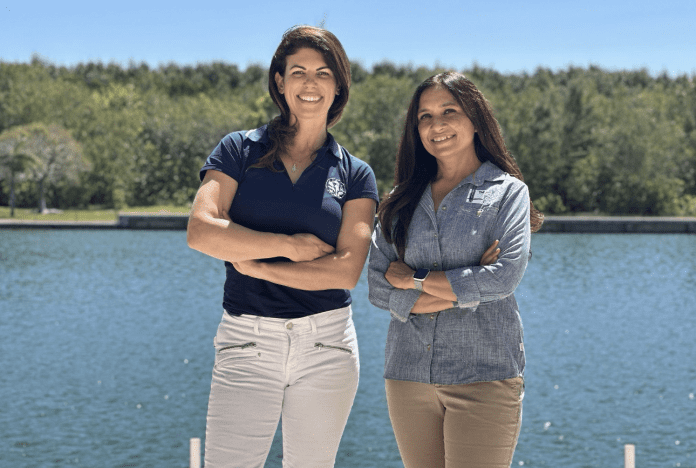|
Getting your Trinity Audio player ready...
|
Two Miami-based organizations dedicated to protecting South Florida’s water—The Everglades Foundation and Miami Waterkeeper—are proud to introduce their latest collaboration: “Miami’s Water and The Everglades.” The collection of five short videos is designed to inform residents about South Florida’s dependence on America’s Everglades for its daily water supply, how the area’s waterways are interconnected, and the role canals and infrastructure play in the water system.
The new series, which will be released collaboratively on social media every Tuesday during the month of October, features Meenakshi Chabba, Ph.D., Ecosystem and Resilience Scientist at The Everglades Foundation, and Rachel Silverstein, Ph.D., Chief Executive Officer, and Miami Waterkeeper. The first installment conveys how misguided efforts beginning in the late 1800s to ditch, dike, and drain the Everglades have disrupted the natural southerly flow of water, with lasting consequences.
“The water diversion continues to impact our ecosystem by starving Florida Bay, Biscayne Bay, and the drinking water aquifer below ground of essential freshwater,” explains Dr. Silverstein. “As a result, we have severe algae blooms, fish kills, and other ecological imbalances, and they have become more prevalent, impacting the Everglades and the communities around them.”
The series also addresses how the altered flow of water impacts Miami’s water supply. Before the natural flow of water was diverted, it would slowly move across the Everglades, seeping into the porous rock below and replenishing the Biscayne Aquifer—the sole source of drinking water for millions of people in South Florida. Man-made canals, concrete, and asphalt replaced the permeable surfaces of green spaces like wetlands and parks, preventing the natural flow and absorption of water.
“Urban pollution like pet waste, fertilizers, chemicals, and debris collects in storm drains and ends up in the canals, ultimately flowing into Biscayne Bay,” says Silverstein. “That’s because all of our waterways are connected, from the Everglades to Miami-Dade County’s canal system, and from the aquifer below ground to the beautiful waters of Biscayne Bay.”
The Everglades Foundation’s Ecosystem and Resilience Scientist, Chabba, further enlightens viewers: “Most of us live on land that was originally part of the Everglades, a wetland where flooding is natural. Numerous canals were built to drain water out of the Everglades and into the ocean, which enabled residents to stay dry, grow cities, and prosper, but also resulted in the degradation of the Everglades.”
The first canals were dug in the early 1900s, but due to the region’s frequent storms and four to five feet of rainfall each year, flooding persisted and led to loss of lives and millions of dollars in damage. In response, the canal system was expanded.
“We now have about 2,600 miles of canals and levees, 1,300 water structures, and 66 pump stations,” notes Chabba, who also explains how water managers lower and raise water levels in the canals depending on whether conditions are dry or wet. However, the largely gravity-based canal system is aging, struggling to maintain flood protection and minimize saltwater intrusion amidst rising sea levels.
“Everglades restoration is crucial for Miami’s flood protection,” adds Chabba. “By modernizing the water management system, and storing and sending clean water south, Everglades restoration is rejuvenating local ecosystems, supporting flood protection, and recharging the Biscayne Aquifer—Miami’s only source of freshwater.”
Each installment in the video series illustrates how Everglades restoration helps safeguard the water in Biscayne Bay and in the taps of millions of residents.
“Our land and water are intimately connected,” says Silverstein. “By advocating for nature, and protecting and restoring our land and water, we can ensure the continued health and vitality of our waterways—from the Everglades to Biscayne Bay, and from the aquifer below ground right to our tap.”
“With Everglades restoration, we have embarked on a remarkable journey to restore a unique ecosystem and build resilience for all who call South Florida home,” adds Chabba.
The Everglades Foundation and Miami Waterkeeper invite South Floridians to join the conversation about nature’s benefits to secure a safe, thriving, and resilient future for Miami.
About The Everglades Foundation:
The Everglades Foundation is a 501(c)(3) non-profit dedicated to restoring and protecting the Everglades through science, advocacy and education. Since its founding in 1993 by a group of outdoor enthusiasts, The Everglades Foundation has become a respected and important science-based advocate for America’s Everglades. For more information, please visit www.evergladesfoundation.org.
About Miami Waterkeeper:
Miami Waterkeeper is a non-profit organization that develops local solutions to global challenges. Miami Waterkeeper protects South Florida’s waters by advocating for resilient solutions grounded in science, rooted in nature, and driven by community. As a leader in environmental advocacy in South Florida, Miami Waterkeeper envisions a resilient South Florida that is a global leader in clean water solutions, where thriving communities and nature coexist. For more information, please visit www.miamiwaterkeeper.org.






